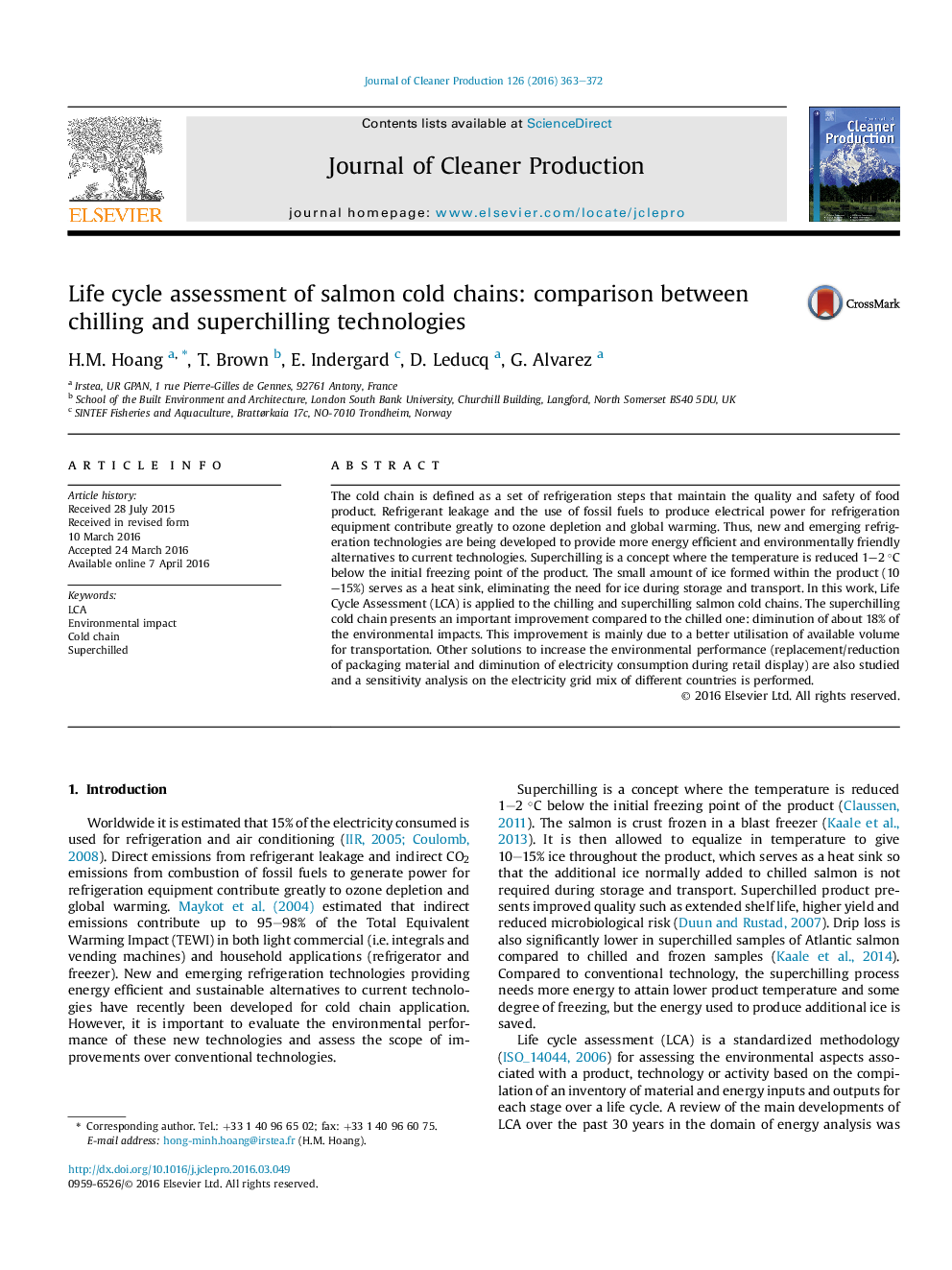| Article ID | Journal | Published Year | Pages | File Type |
|---|---|---|---|---|
| 8102111 | Journal of Cleaner Production | 2016 | 10 Pages |
Abstract
The cold chain is defined as a set of refrigeration steps that maintain the quality and safety of food product. Refrigerant leakage and the use of fossil fuels to produce electrical power for refrigeration equipment contribute greatly to ozone depletion and global warming. Thus, new and emerging refrigeration technologies are being developed to provide more energy efficient and environmentally friendly alternatives to current technologies. Superchilling is a concept where the temperature is reduced 1-2 °C below the initial freezing point of the product. The small amount of ice formed within the product (10-15%) serves as a heat sink, eliminating the need for ice during storage and transport. In this work, Life Cycle Assessment (LCA) is applied to the chilling and superchilling salmon cold chains. The superchilling cold chain presents an important improvement compared to the chilled one: diminution of about 18% of the environmental impacts. This improvement is mainly due to a better utilisation of available volume for transportation. Other solutions to increase the environmental performance (replacement/reduction of packaging material and diminution of electricity consumption during retail display) are also studied and a sensitivity analysis on the electricity grid mix of different countries is performed.
Keywords
Related Topics
Physical Sciences and Engineering
Energy
Renewable Energy, Sustainability and the Environment
Authors
H.M. Hoang, T. Brown, E. Indergard, D. Leducq, G. Alvarez,
